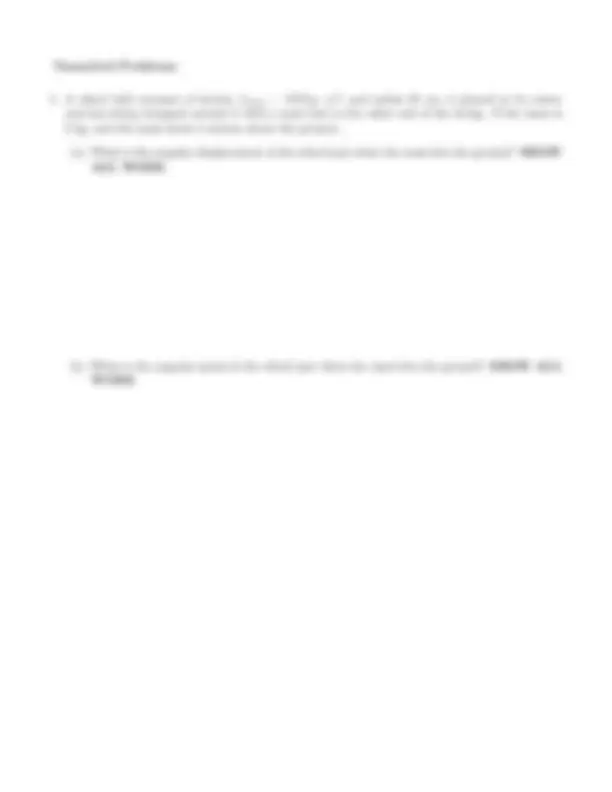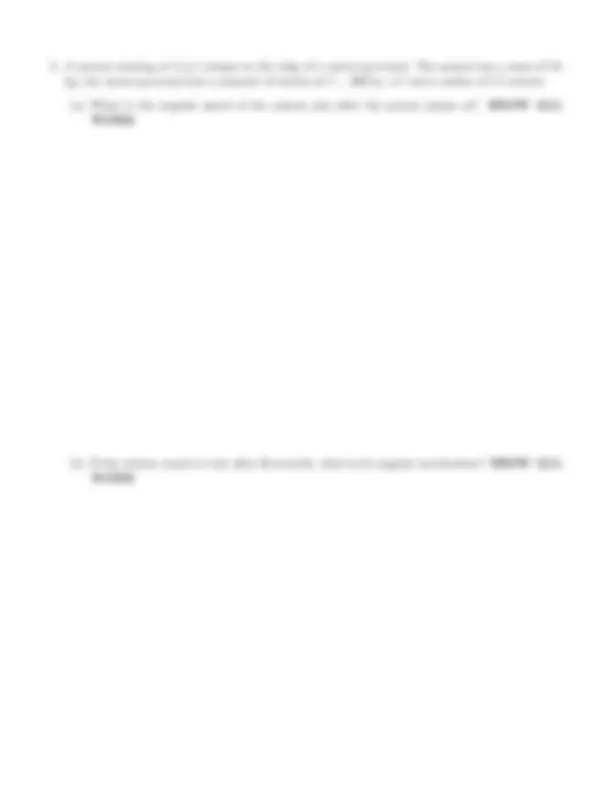





Study with the several resources on Docsity

Earn points by helping other students or get them with a premium plan


Prepare for your exams
Study with the several resources on Docsity

Earn points to download
Earn points by helping other students or get them with a premium plan
Community
Ask the community for help and clear up your study doubts
Discover the best universities in your country according to Docsity users
Free resources
Download our free guides on studying techniques, anxiety management strategies, and thesis advice from Docsity tutors
Information about exam iii for physics 1111 at a university. The exam is a closed-book exam worth 100 points, with multiple choice and numerical problems. It covers topics such as velocity, mass on a spring, moment of inertia, and torque.
Typology: Exams
1 / 6

This page cannot be seen from the preview
Don't miss anything!




Physics 1111 CRN 26283 Exam III Name April 25, 2008
Multiple Choice: (Circle the best answer from the choices given.)
(a) 1.43 m (b) 2.45 m (c) 5.60 m (d) 21.99 m
(a) 1 (b)
(c) 2 (d) 4
(a) (^12) (b) 1 (c) 4 (d) 8
Circle the statements below that are false:
(a) If they are positioned as shown, what force must the left support be able to support? SHOW ALL WORK
(b) Assuming only one support can support all of the weight, how far from the left end should it be placed (with the other two removed) so that everything remains stationary? SHOW ALL WORK
(a) What is the angular speed of the system just after the person jumps on? SHOW ALL WORK
(b) If the system comes to rest after 30 seconds, what is its angular acceleration? SHOW ALL WORK